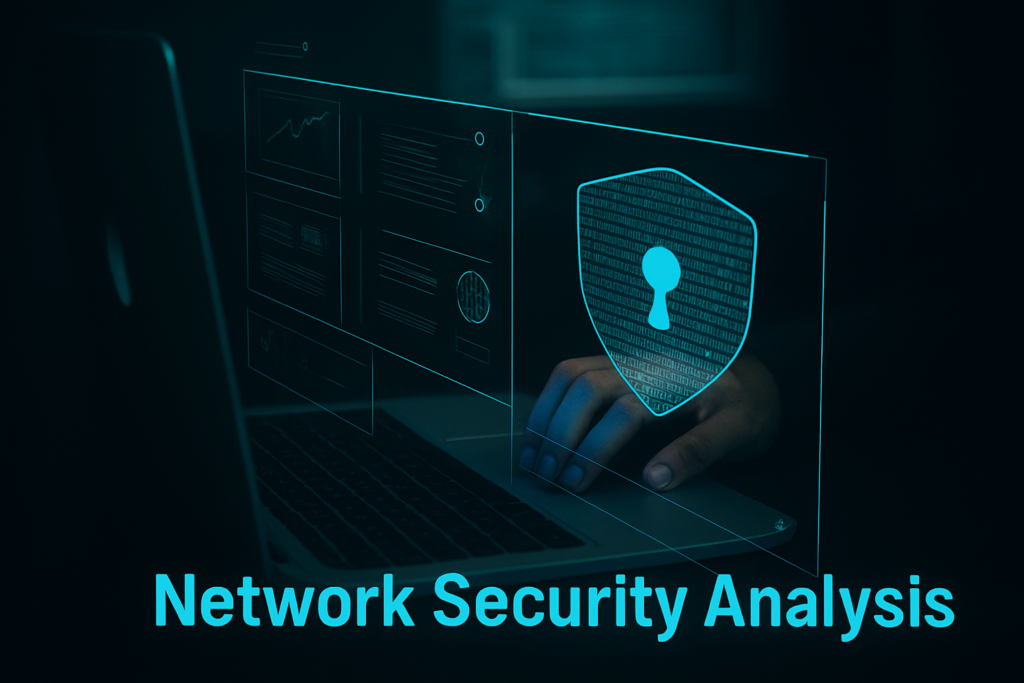
Unmask the Threats That Traditional Security Tools Often Miss
What is network security analysis, and why should you care?
Imagine your business is a secure building. You have a guard at the front door checking IDs and watching the main entrance; that's your firewall. But what if someone Mission Impossibled into your building, avoiding the doors? Or a trusted visitor starts acting suspiciously once inside?
You have security inside the building, watching the hallways, right?
This is precisely what effective network traffic analysis does for your digital environment. It gives you the visibility to spot threats that have already bypassed your perimeter defences.
Firewalls and antivirus software are essential, but they don't see everything. Understanding how to monitor what happens after traffic gets inside your network is critical.
What is Network Traffic Analysis?
At its core, network traffic analysis (NTA) is the process of intercepting, recording, and studying network traffic in real-time. It gives you a detailed view of how data moves across your network, who is talking to whom, and what they are saying.
This process typically uses a cybersecurity traffic probe to capture data packets flowing through the network. Sophisticated tools then analyse this raw data. They use a mix of rules, machine learning, and behavioural analysis to identify patterns that could signal a security threat or an operational issue.
The Growing Importance of Network Traffic Analysis
Perimeter-based security tools are no longer enough. The way we work has changed, meaning the "network edge" is now everywhere, from your head office to a remote employee's home office. This is why the importance of network analysis has grown so dramatically.
Attackers know that once they get past the firewall, they can often go undetected for long periods.
According to the 2025 M-Trends report from Google's Mandiant researchers, the global median dwell time (the time an attacker is present in a network before being detected) is 11 days in 2024. Although it's lower than the 2022 peak of 16 days, it rose by 1 day from the previous year.
[A]ttackers are seizing every opportunity to further their objectives.
M-Trends 2025
This is almost two weeks for a threat actor to move around, steal data, and set up backdoors.
Your network security analysis is critical for shrinking that detection window. It's one of the most effective ways to detect this kind of hidden activity.
Specifically, it excels at spotting lateral movement, which is when an attacker who has compromised one machine attempts to move to other systems within the same network. This is often a tell-tale sign of an advanced, active attack.
How Analysing Network Traffic Helps Combat Cyberattacks
So, how does this process actually help you fight off threats? By providing in-depth visibility, it allows your security team to spot malicious activities that are often invisible to other tools.
Here are a few examples of what a high-quality network security analysis can uncover.
- Spotting Stealthy Attacks. Advanced attackers try to blend in with regular traffic to avoid detection. By analysing network traffic for subtle anomalies and patterns, NTA can uncover these stealthy operations.
- Detecting Malware and Ransomware. Even if malware gets past your initial defences, it usually needs to communicate with an external command-and-control server to receive instructions. NTA can spot this suspicious outbound traffic and alert you to a compromised device.
- Identifying Data Exfiltration. When attackers steal data, it involves transferring large amounts of information to an external server. NTA can flag these unusual outbound data flows.
- Uncovering Insider Threats. NTA can establish a baseline for normal user behaviour. When an employee's account suddenly starts accessing unusual files or transferring large amounts of data at odd hours, the system can flag it as a potential insider threat.
- Aiding Incident Investigation. When a breach does occur, the detailed logs captured by network traffic analysis are invaluable. They provide a clear record of the attacker's activities, helping you understand the full scope of the incident and ensure it doesn't happen again.
Effective Network Security Analysis Best Practices
To get the most out of your network analysis, you need a solid strategy.
However, network security analysis isn't just investing in a high-end tool, and then you're secure. No, it's creating a robust and living process.
- Establish a Baseline. You can't spot abnormal activity if you don't know what "normal" looks like. Start by mapping your network and understanding your typical traffic patterns.
- Segment Your Network. Dividing your network into smaller, isolated zones makes it much easier to monitor traffic and contain a breach if one occurs.
- Focus on Both North-South and East-West Traffic. Don't just monitor traffic entering and leaving your network (north-south). Pay close attention to traffic moving between systems within your network (east-west) to detect lateral movement.
- Don't Rely on a Single Tool. NTA is powerful, but it works best when integrated with other security solutions like firewalls, endpoint protection, SIEM (Security Information and Event Management) systems, and regular penetration testing.
- Have a Human in the Loop. Automated tools are great for flagging potential issues. But the truth is, you still need human expertise to interpret the alerts, rule out false positives, and understand the context of a potential threat.
Challenges and How 7ASecurity Can Help
Implementing effective network security analysis isn't without its hurdles.
The sheer volume of data to review is overwhelming. Not to mention, with over 95% of web traffic encrypted, it's difficult to see what's inside the data packets. This can lead to alert fatigue, where your team is so flooded with minor notifications that they miss the one that truly matters.
Accurately interpreting the data is also a niche skill. Not many organisations can hire someone in-house.
This is where expert cybersecurity consulting makes all the difference.
While NTA tools are powerful, they are just that—tools. The real value comes from a human expert who can interpret the data, understand the context, and see what a machine might miss.
Ultimately, we, at 7ASecurity, can provide a much more in-depth level of assurance than any single tool can offer.
Seeing the Bigger Picture
Visibility is everything in cybersecurity. Knowing what's happening on your network is the first step to defending it properly. We're here to give you that clarity.
Let us show you what's really happening on your network.

